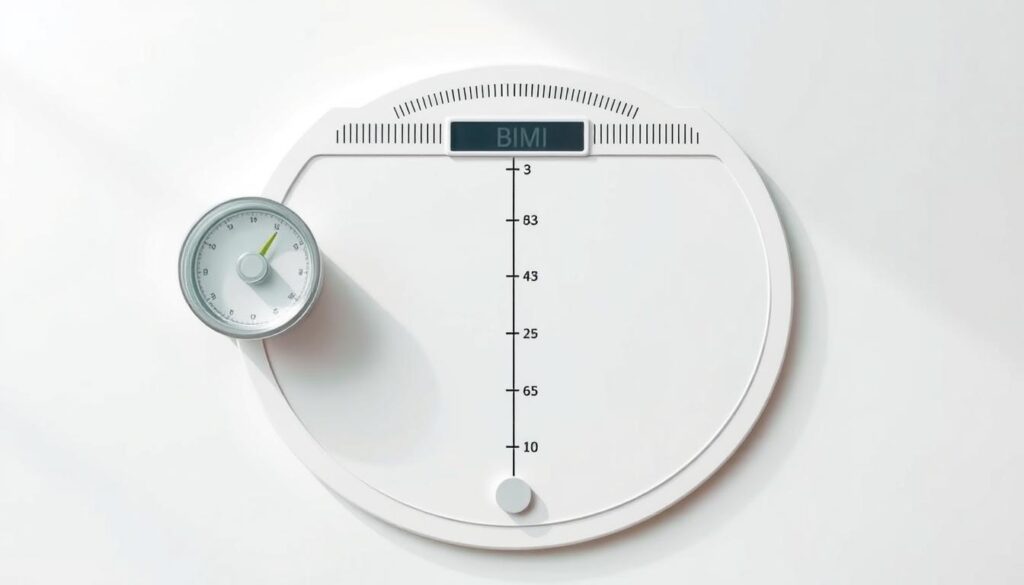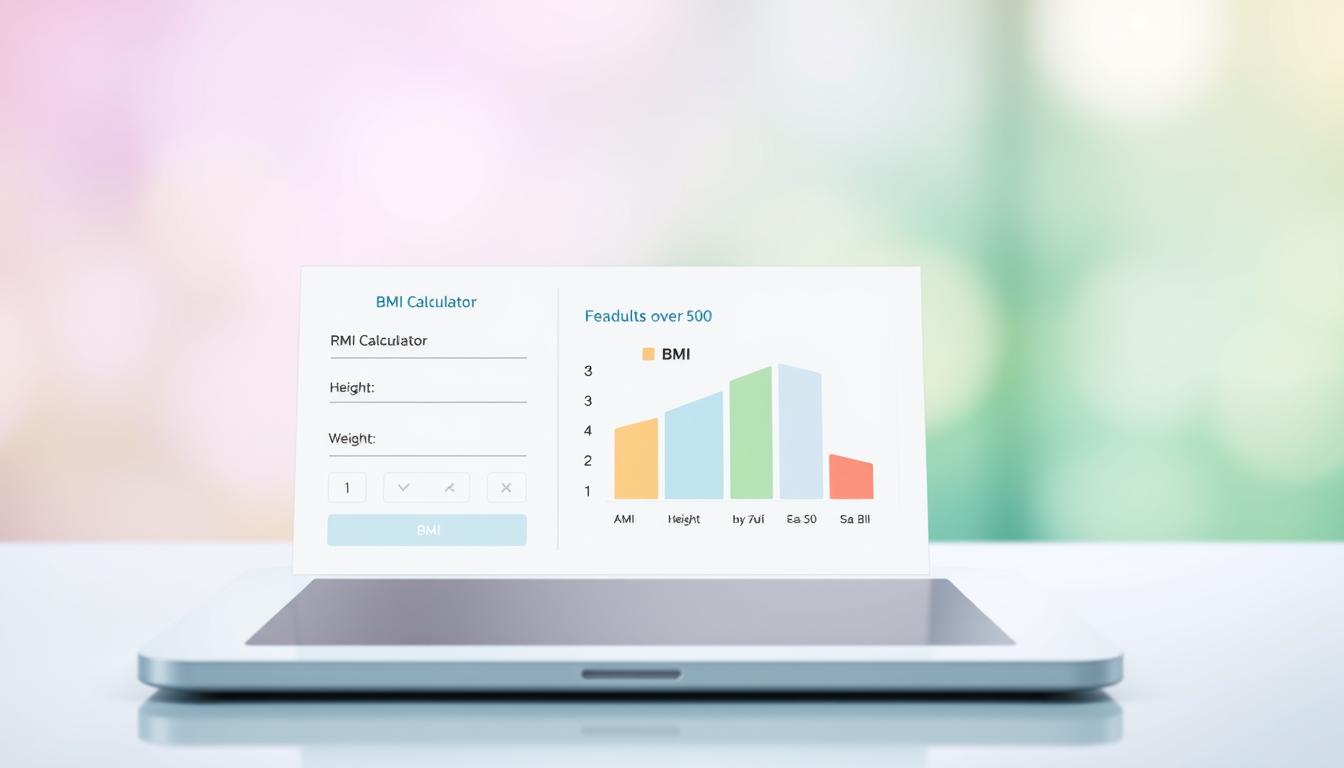Does stepping on a scale truly reflect your health as you age? For adults over 50, body composition changes in ways simple weight measurements can’t capture. That’s where understanding your body mass index becomes critical.
We designed a tool specifically for this stage of life. It calculates your body mass index using height and weight data, instantly sorting results into categories like underweight or healthy range. These insights help identify potential health risks linked to extreme values.
Our formula draws from guidelines by institutions like the CDC. It accounts for age-related muscle loss and fat distribution shifts—factors often overlooked in generic calculators. You’ll receive clear explanations of what your number means, plus actionable steps to improve wellness.
Key Takeaways
- Tailored for adults 50+, addressing age-specific body changes
- Instant results using medically reviewed calculations
- Identifies weight categories linked to health risks
- Explains how muscle mass and metabolism affect outcomes
- Provides actionable strategies based on your results
This resource goes beyond basic math. We combine precise calculations with age-appropriate health guidance, helping you make informed decisions about nutrition, activity, and preventive care. Your results become a starting point—not an endpoint—for thriving in later years.
Understanding BMI and Its Impact on Health
Numbers on a chart tell only part of your health story. Body Mass Index (BMI) measures body fat relative to height and weight, offering a snapshot of potential risks. It’s calculated by dividing weight in kilograms by height squared (kg/m²)—a formula endorsed by major health organizations.

What Does Your Number Mean?
Four categories define results:
- Below 18.5: Underweight (nutritional deficiencies risk)
- 18.5–24.9: Healthy range
- 25–29.9: Overweight
- 30+: Obesity
Research shows values above 25 correlate with 40% higher cardiovascular disease likelihood. Those below 18.5 face increased osteoporosis risks. Our tool factors in age-related body mass shifts, like muscle loss affecting accuracy.
Beyond the Calculation
While useful, mass index doesn’t measure visceral fat or bone density. A 2023 Johns Hopkins study found waist circumference adds critical context for older adults. We always recommend pairing results with blood pressure checks and mobility assessments.
Maintaining a healthy weight becomes vital after 50. Small changes—like adding strength training—can significantly alter outcomes without drastic dieting. Remember: This metric starts conversations, not ends them.
How Our BMI calculator for adults over 50 Works
Aging reshapes your body; our calculations reflect those shifts. We built this measurement tool to address age-related changes in muscle mass and fat distribution—factors generic formulas often ignore.

Accurate Measurement Using Height and Weight
The process starts with your current metrics. Enter weight in pounds or kilograms and height in feet/inches or meters. Our system instantly converts imperial units using precise multipliers (1 kg = 2.20462 lbs, 1 inch = 2.54 cm).
Behind the scenes, the standard mass index formula runs: weight divided by height squared. But we adjust for natural muscle loss that occurs after 50. This ensures results account for body composition shifts affecting health risks.
Instant Results and Detailed Breakdown
Within seconds, you receive three key insights:
- Your personalized mass index value
- Category placement (underweight to obesity range)
- Age-specific risk assessment for conditions like osteoporosis
The tool explains how metrics like waist circumference might influence your results. We highlight actionable steps—like protein intake targets—to address identified risks without crash diets.
Every calculation includes conversion references. For example, 150 pounds becomes 68 kg automatically. This eliminates math errors that could skew outcomes. Our focus? Delivering clarity for informed health decisions in later years.
Benefits and Considerations of Using Our Tool
Tracking health metrics becomes more crucial as we age. Our specialized analysis offers a practical way to monitor changes while understanding its boundaries. Let’s explore how this tool supports proactive wellness strategies.
Why Regular Monitoring Matters
Consistent checks help people spot trends that could signal developing issues. Research shows those who track their metrics reduce diabetes risk by 28% through early intervention. Our system flags subtle shifts in body composition linked to heart problems or metabolic changes.
Recognizing Measurement Boundaries
While useful, this approach doesn’t distinguish between muscle and fat mass. A 2022 study found 35% of active older adults get misclassified due to lean tissue loss. We recommend pairing results with waist measurements or professional health assessments for fuller insights.
Building Complete Wellness Strategies
Integrate your results with other information like blood sugar levels or activity patterns. This table shows how different metrics work together:
| Metric | Strengths | Complementary Tools |
|---|---|---|
| Body Composition | Identifies muscle/fat ratio | DEXA scans |
| Waist Circumference | Measures abdominal fat | Blood pressure checks |
| Activity Tracking | Shows movement patterns | Fitness wearables |
Combine these insights with targeted nutrition plans for lasting results. People should consult healthcare providers if their numbers fall outside expected ranges despite lifestyle adjustments.
Conclusion
Navigating health after 50 requires tools that adapt to your changing body. Our specialized analysis delivers instant insights into your body fat levels and overall health category, helping identify risks tied to conditions like heart disease or diabetes. Unlike generic formulas, it accounts for age-related shifts in muscle mass and metabolism.
Regular use helps track progress in kilograms or pounds while highlighting trends that matter. Though not designed for children, this approach empowers older users to understand their index within context. Pair results with bloodwork or mobility assessments for a complete picture.
Remember: One number doesn’t define wellness. Our tool shines when combined with professional guidance and other metrics like waist measurements. Check monthly to spot subtle changes before they escalate into disease risks.
Take charge of your health journey today. Integrate this resource into your routine alongside balanced nutrition and strength training. Knowledge—and action—build lasting vitality after 50.


